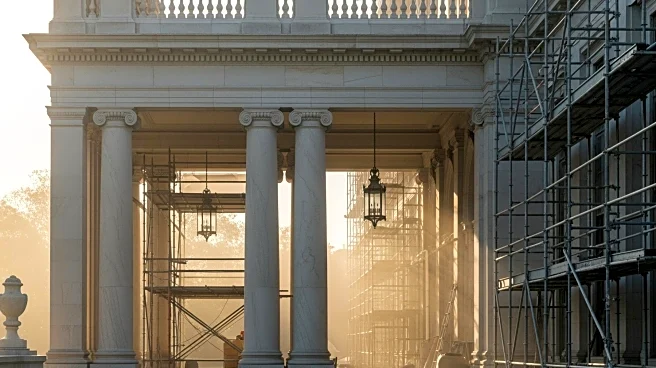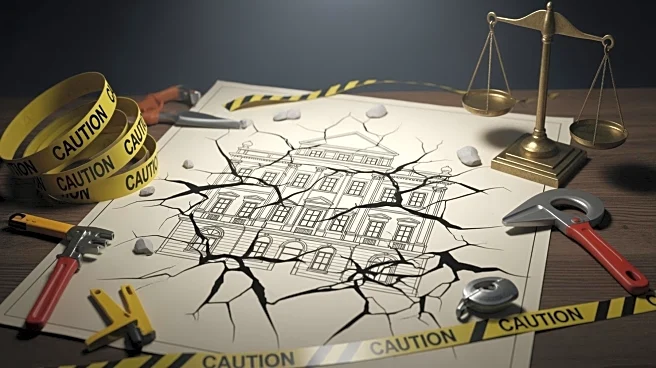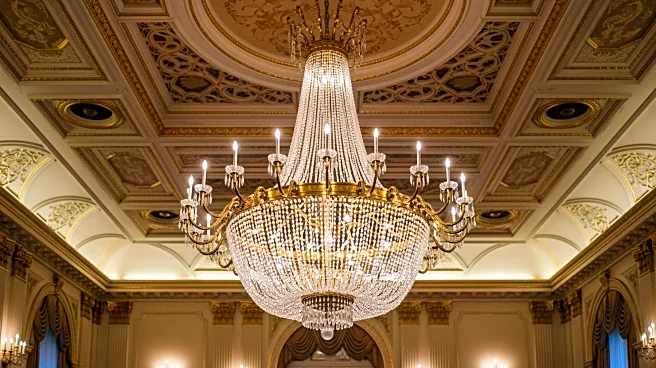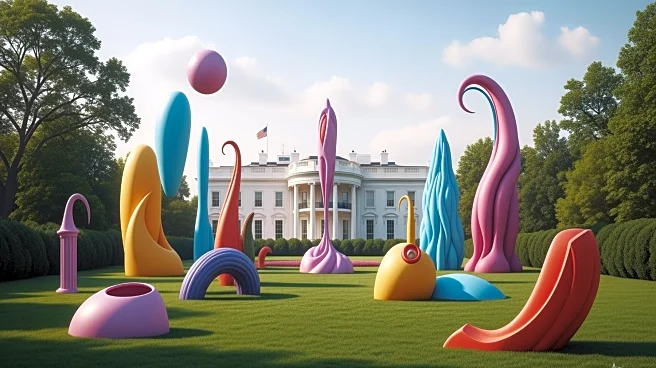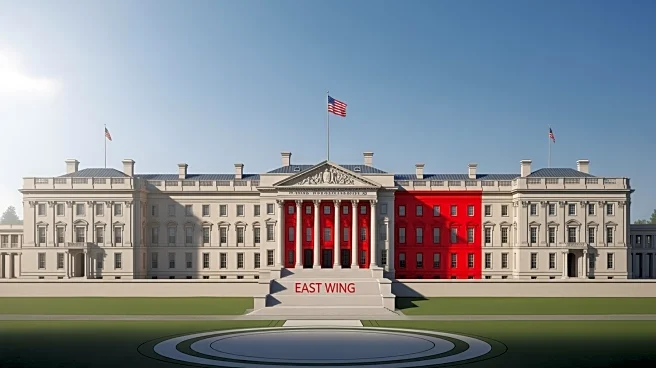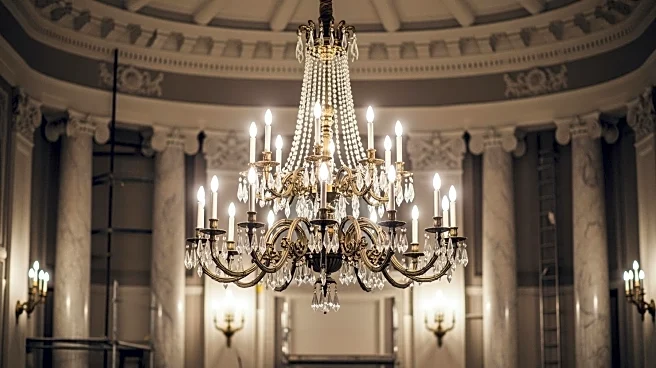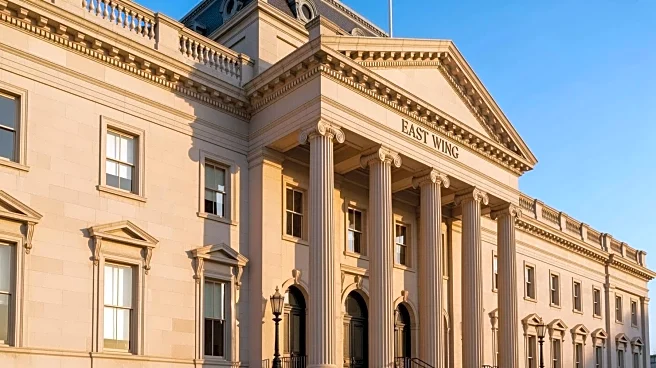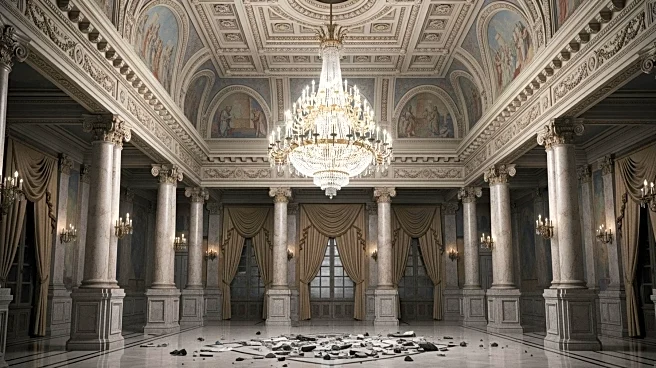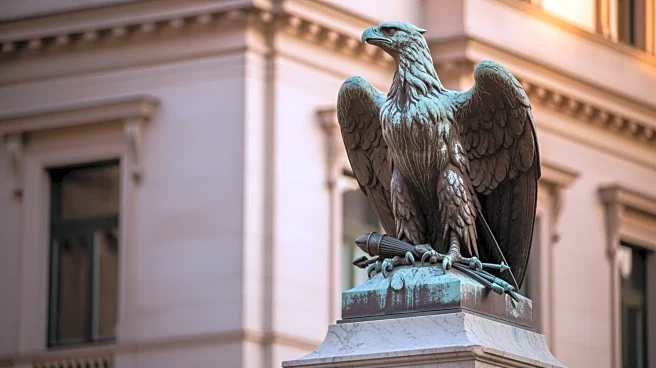What's Happening?
President Trump has demolished the East Wing of the White House to make way for a new 90,000-square-foot ballroom, a project estimated to cost over $300 million and funded by corporate donations. The demolition
has drawn significant criticism from heritage experts, including the National Trust for Historic Preservation and the American Institute of Architects, as well as former first lady Hillary Clinton and members of Congress. Critics argue that President Trump should have sought approval through the National Capital Planning Commission and the Commission of Fine Arts. The East Wing, first constructed in 1902 and traditionally used as office space for first ladies, holds significant historical value and memories for those who have worked there.
Why It's Important?
The demolition of the East Wing raises concerns about the preservation of historical landmarks and the processes involved in altering such significant structures. The decision to proceed without seeking approval from relevant commissions highlights potential issues with checks and balances in government decision-making. This move could set a precedent for future alterations to historically significant buildings, impacting how heritage sites are preserved and managed. The controversy also reflects broader tensions between President Trump's administration and traditional governmental procedures, potentially affecting public trust and engagement with heritage conservation efforts.
What's Next?
The demolition has sparked outrage among heritage experts and political figures, which may lead to increased scrutiny and calls for legislative action to protect historical sites. There could be potential legal challenges or demands for accountability regarding the decision-making process. Additionally, the ballroom project may face delays or modifications if public pressure mounts. Stakeholders, including heritage organizations and political leaders, may push for more stringent regulations and oversight in future projects involving historical landmarks.
Beyond the Headlines
The demolition of the East Wing could have long-term implications for cultural heritage preservation in the U.S. It raises ethical questions about the balance between modernization and conservation, and the role of corporate influence in government projects. The event may also influence public discourse on the importance of maintaining historical integrity versus pursuing new developments, potentially affecting future policy decisions in heritage conservation.
